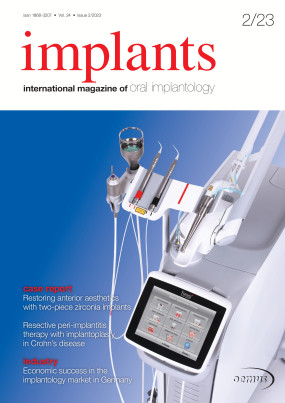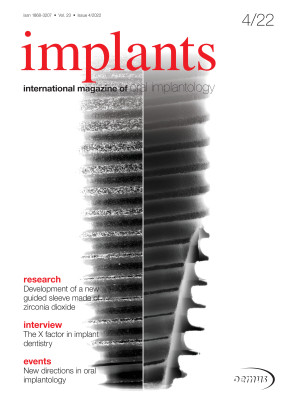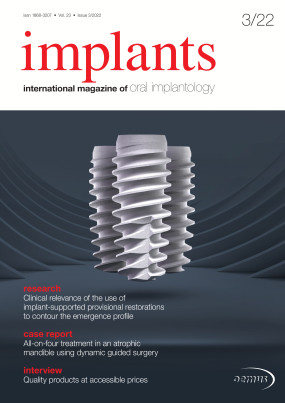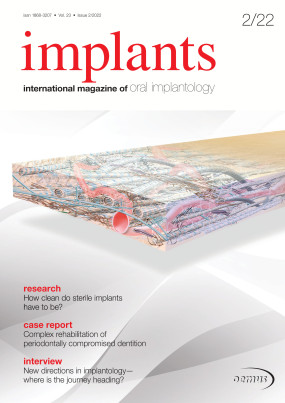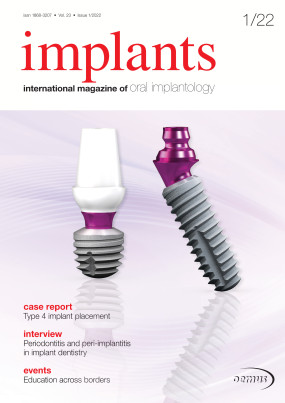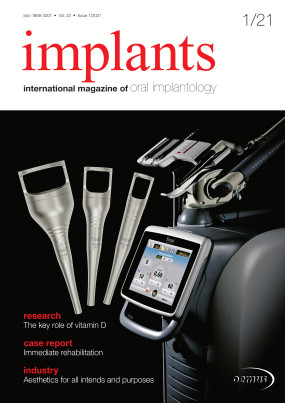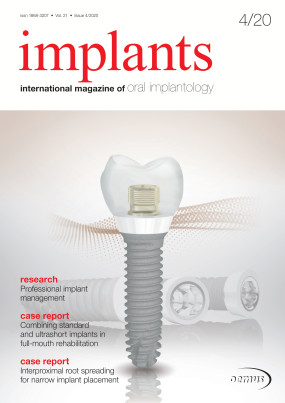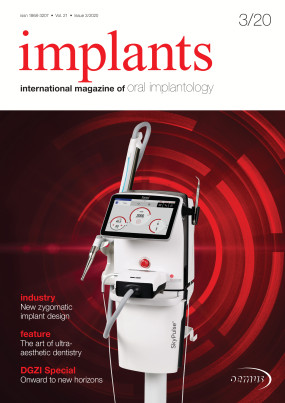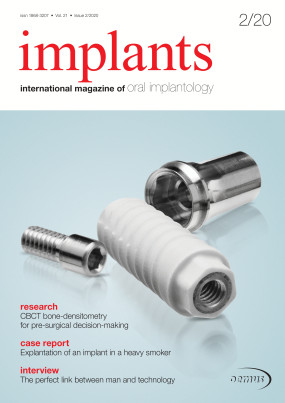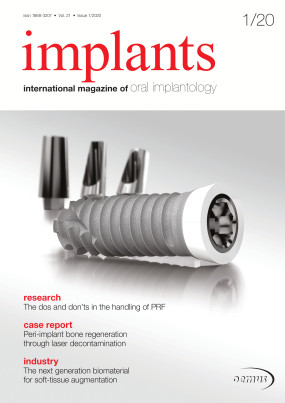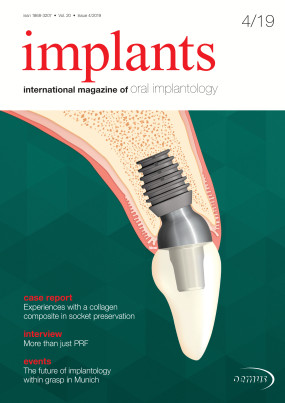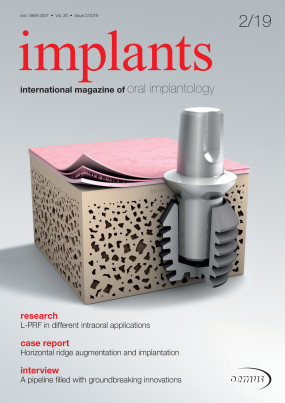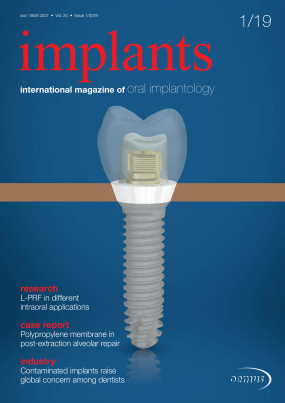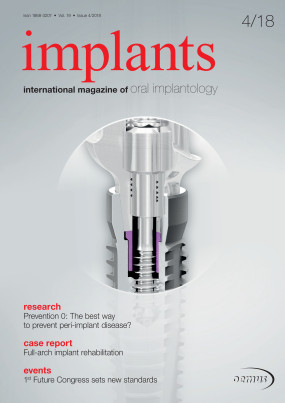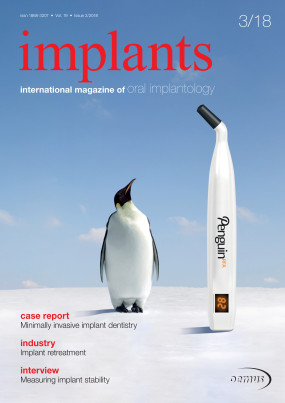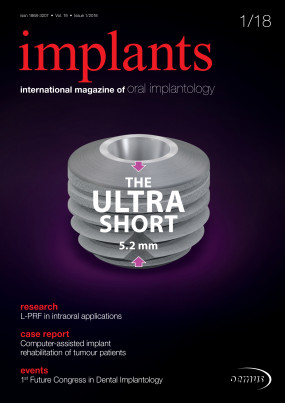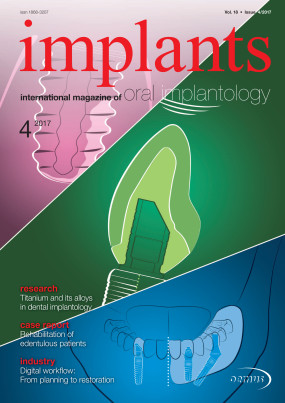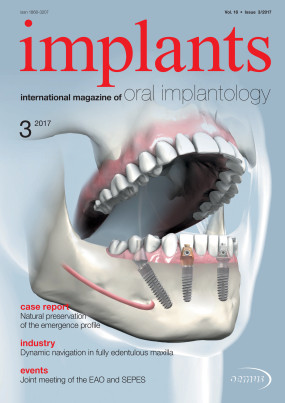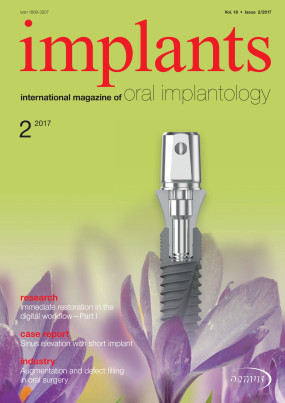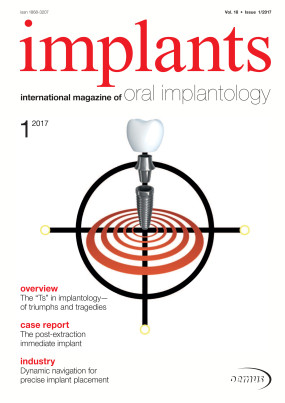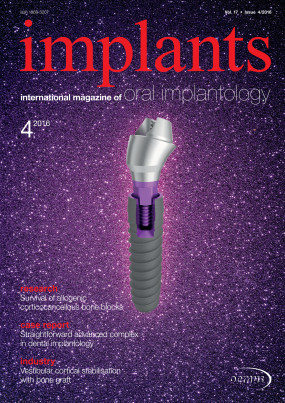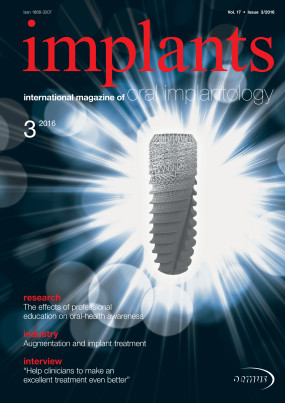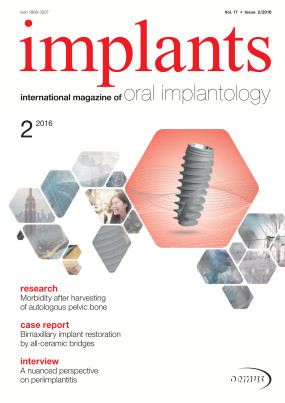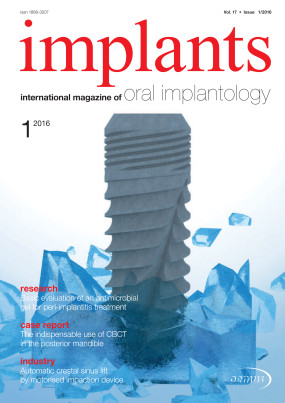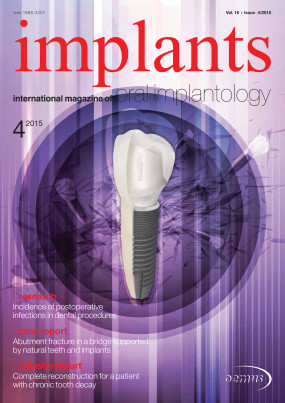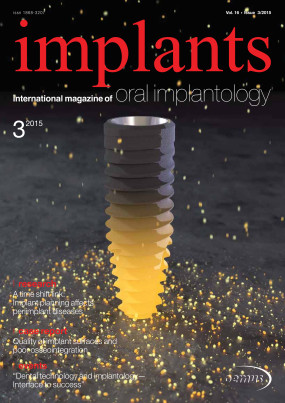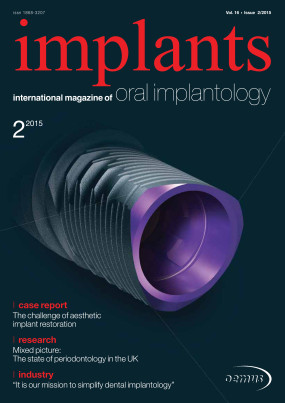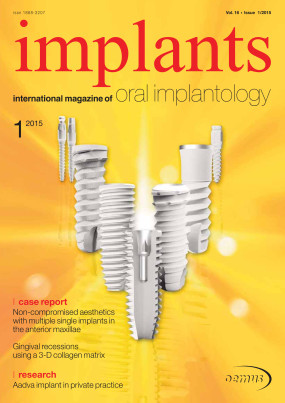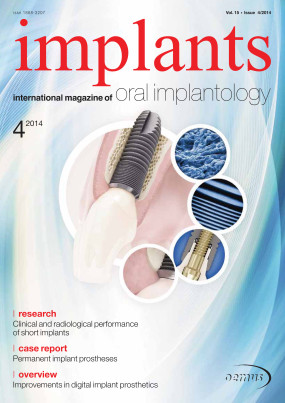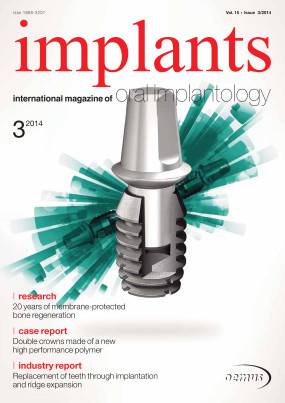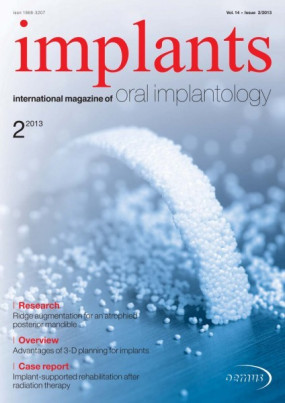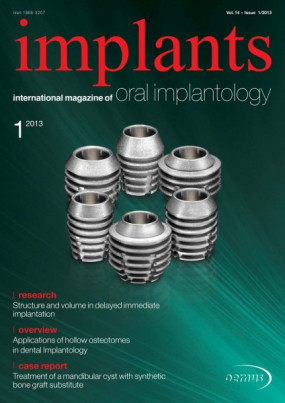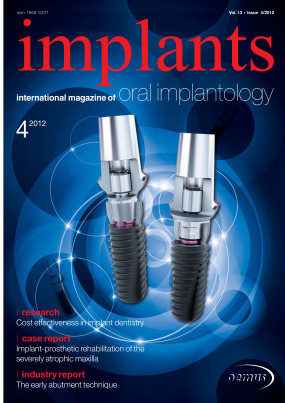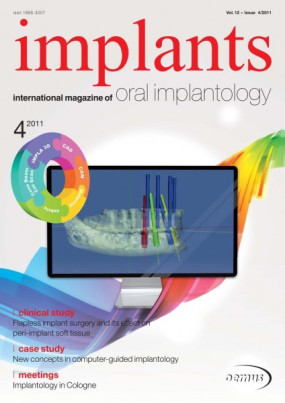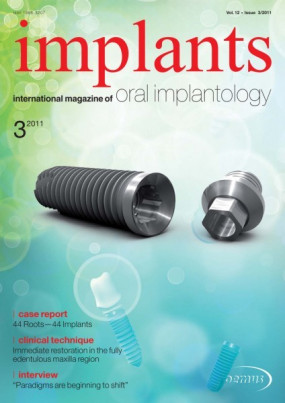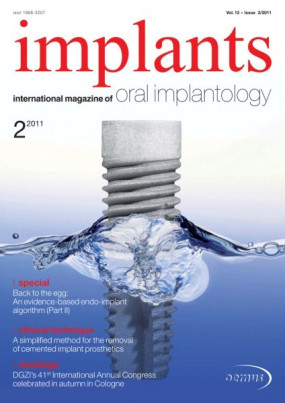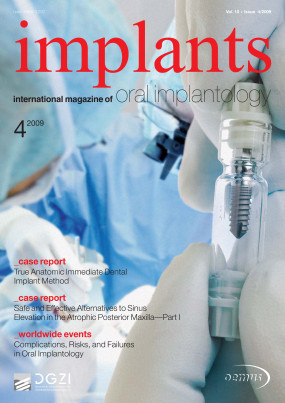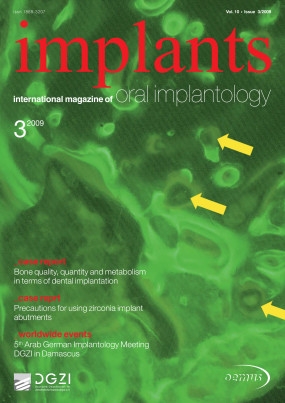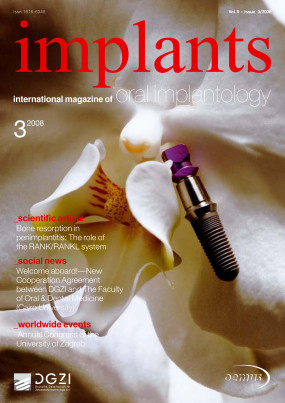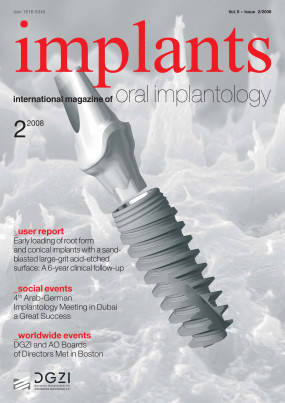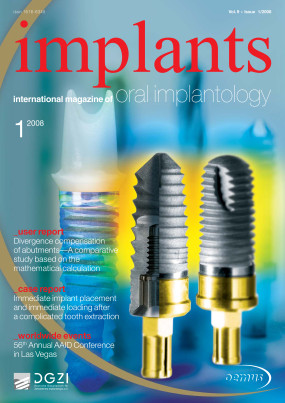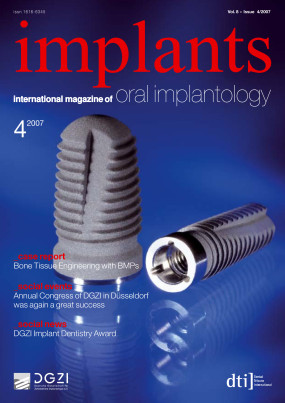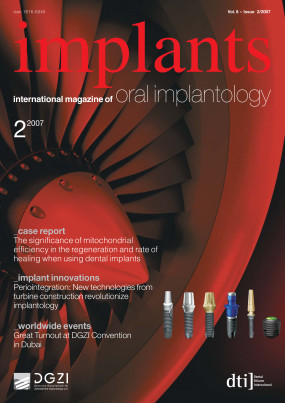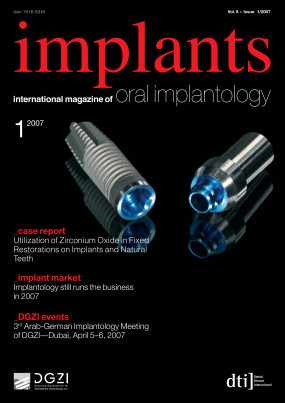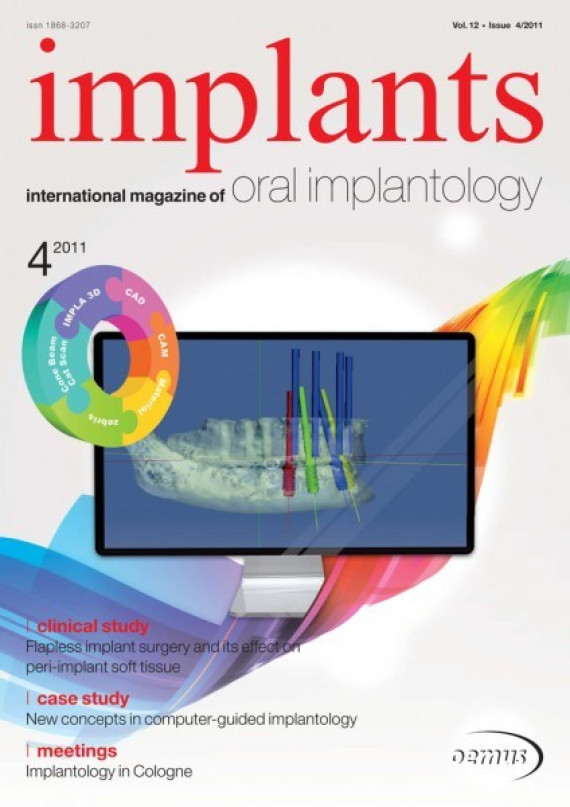Inhaltsverzeichnis
3
Certainly many readers must have chuckled when they read the main topic of the podium discussion of DGZI’s 41th International Annual Congress, which has now concluded. Not only did the city of Cologne show its nicest and most hospitable sides, but the congress itself also pleased and satisfied our members, friends, and guests from abroad. The congress’ two training days packed with information, its attractive dental exhibition and its thorough and perfect organization (for which we kindly give our thanks to the Oemus Media AG Team) will surely leave lasting and positive impressions on all participants. There was a good deal of enthusiastic debate, controversial discussions, and even a fight or two in Cologne!
6
Flapless implant surgery and its effect on peri--implant soft tissue - A prospective longitudinal clinical study
Dr Kai Höckl, Prof Peter Stoll, Dr Georg Bach, Prof Wolfgang Bähr & Dr Verena Giers, Germany
Minimally invasive implant insertion may offer the reduction of peri-implant inflammation, pocket depth and crestal bone loss, as well as minimisation of post-surgical complications. The goal of the present study was to clinically investigate the soft-tissue response and to compare the outcome obtained with flapless, placed implants of three different manufacturers.
18
Consideration of an uncommon approach in the atrophied posterior zone (Part I): Extraction plus technique
Dr Maen Aburas, UAE, & Dr Ralf Gutwald, Germany
In the past, it was a significant challenge for clinicians to achieve implantation in the alveolar ridge of the posterior zone with restricted bone height, for which the alternative treatment choices were limited. However, procedural and technological developments have enabled implantation in most cases of severe bone resorption through the use of complex bone augmentation techniques, such as bone transmission, sinus lifting, distraction and nerve transpositioning, and the use of bone substitute, membrane and nail fixation, which might increase the risk of complication and failure...
26
New concepts in computer-guided implantology (Part I): Thread timing and implant phase
Dr Gian Luigi Telara, Italy
In recent years, there has been growing interest in guided implantology. A digital work-up is certainly a great benefit for clinicians to better understand their patients’ bone morphology and density and consequently to correctly plan implant positions, and to have their hands guided during implant placement by means of a surgical guide. There are many systems on the market today and many authors have studied post-operative CT scans and planning scans by means of superimposition, in seeking to understand the secret to achieving the perfect correspondence and the best system, but this perfect accuracy has not yet been found and there appears to be a missing link between planning and the actual implant position...
34
Second implantation after implant fracture
Dr Michael Hopp, Andreas Klar, Prof Dr Reiner Biffar, Germany
To date, implant fractures are regarded as an extreme situation, to be feared due to the severe injuries to the jaw and the destruction of the supraconstruction. The reality is often different in cases of the effects of force (fall, blow, etc.). Fracture of the implant often remains the exception, as screws or abutments fracture instead, or the damage to the bone remains manageable and repeat treatment is possible. The following case shows the procedure for a replacement implant with an IMPLA screw implant after fracture of a ceramic implant...
38
Use of tilted implants in the treatment of the edentulous posterior maxilla
Prof Gregor-Georg Zafiropoulos, Germany
This case report describes the technique of implant insertion in the edentulous maxillary posterior region at an angle of 35° to avoid a sinus lift procedure and immediate restoration using fixed partial dentures (FPD), e.g. bridges...
44
The 20th annual congress of the European Association for Osseointegration (EAO) took place under less-than-ideal conditions. Huge piles of garbage bags littered the narrow alleys of the Greek capital, and metro buses and trains were not running for most of the time owing to the ongoing public service strikes. Furthermore, air-traffic controllers in several European countries threatened to stop working during the week in which the congress was to take place. Despite these unfavourable circumstances, more than 3,000 dental clinicians and researchers in the field of implantology attended the dental implant event of the year, which took place at the Megaron Athens International Conference Centre not far from the Presidential Mansion in Athens...









